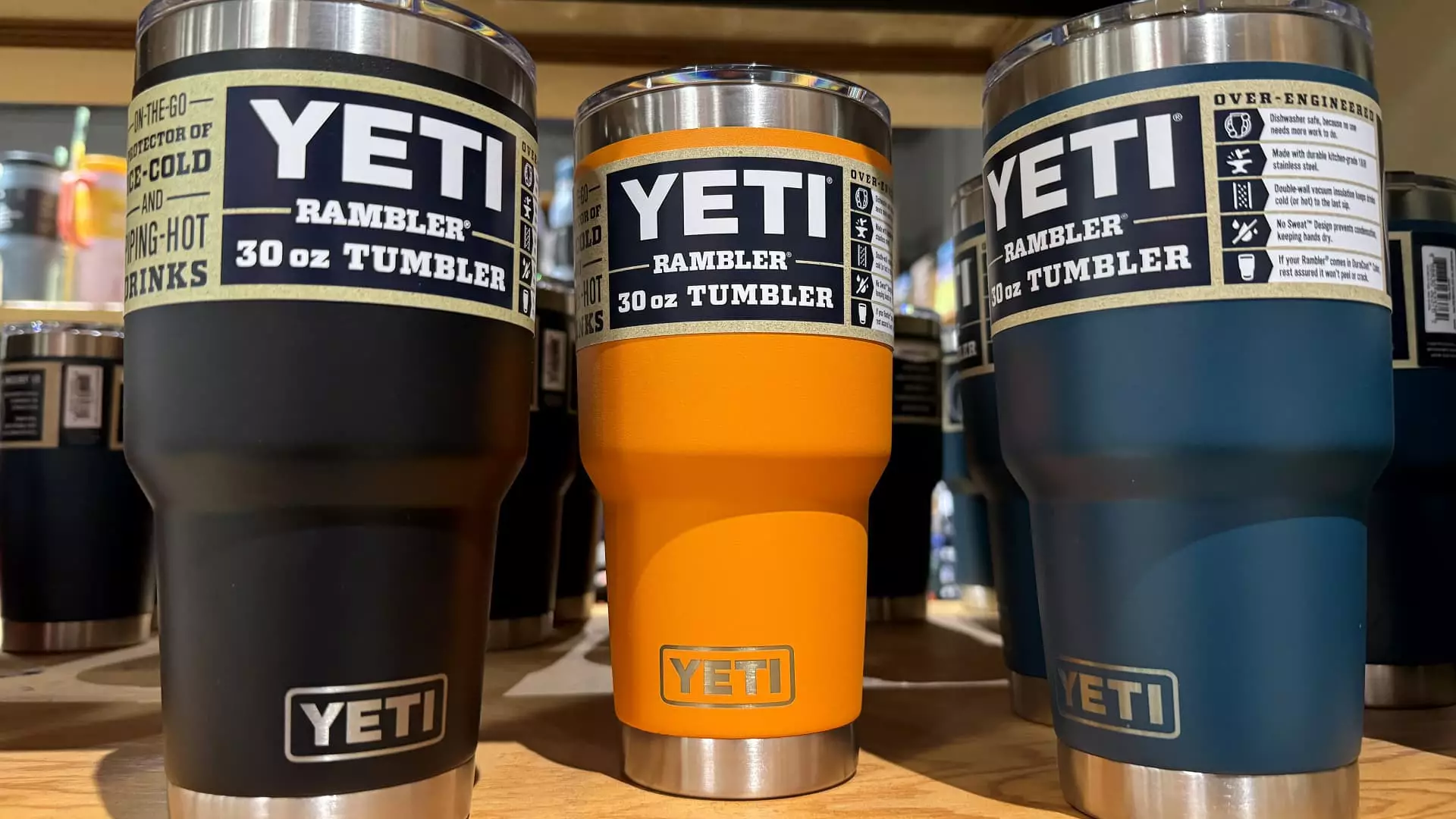Yeti Holdings, known for its iconic insulated coolers and drinkware, is more than just a manufacturer of outdoor products—it’s a brand that has cultivated an image synonymous with quality and durability. Despite its illustrious reputation, operational missteps have turned investor sentiment sour, and shares recently sunk to $30.15 after an impressive peak of $108 just two years prior. This decline has left many questioning whether Yeti is painted into a corner with stagnant growth or if it can reclaim its upward trajectory with strategic pivots.
What should trouble shareholders and investors alike are the missed opportunities for growth—three distinct areas where Yeti can leverage its brand strength for an unparalleled expansion. Each of these avenues demonstrates a pathway not just for recovery, but for impressive returns in a marketplace that feels increasingly competitive.
Expansion into New Territories
Yeti has made strides in the North American market, yet its expansion into international territories remains lackluster. While there has been some success in Canada and Australia, Europe and Asia represent treasure troves of untapped potential. This is especially critical as these regions witness surging interest in outdoor activities and products.
The outdoor industry is witnessing a renaissance worldwide, driven by an increased emphasis on health and wellness that aligns perfectly with Yeti’s premium product offerings. Establishing a strong foothold in these territories could catapult Yeti into an entirely new stratosphere. Imagine Yeti-branded coolers and drinkware at every major outdoor festival in Europe—the revenue stream could be exponential if managed properly.
Combining product innovation with geographical diversification could provide the rocket fuel necessary to execute a double-digit growth strategy. The groundwork is already laid; all that’s needed is the acceleration of these plans by cultivating relationships with local retailers and adventure brands.
Embracing Product Diversification
What sets Yeti apart is its prowess in maintaining brand loyalty through quality. Its innovation in insulation technology has positioned the brand favorably against competitors. However, the current portfolio’s narrow focus poses a risk. While the coolers and drinkware categories generated 60% and 38% of net sales in 2024, respectively, the potential in ancillary categories like luggage and camping equipment remains ripe for the picking.
With a robust infrastructure and advanced technology in place, Yeti should capitalize on its existing advantages to develop these new product lines. The challenge lies in execution—effective marketing and strategic launches will determine if consumers perceive Yeti as just an outdoor cooler brand or an all-encompassing outdoor lifestyle powerhouse.
For example, akin to SharkNinja’s successful expansion into home appliances, Yeti has a golden opportunity to tap into the luggage market, aligning its brand ethos of durability with travel needs. Existing loyal customers would likely embrace and advocate for a Yeti suitcase as readily as they do a Yeti cooler.
Increasing Engagement and Communication with Investors
Investor relations at Yeti have lulled into complacency. An absent investor day and unclear mid-term targets have hindered the kind of investor confidence that credible brands flourish upon. For Yeti to realize its potential, transparency is key. The absence of regular communications and clear guidance has led many to underestimate the company’s capabilities.
When examining successful counterparts, firms that effectively engage their investors tend to demonstrate significantly higher growth metrics. Shareholders and potential investors need to know how management plans to realize Yeti’s opportunities for growth, especially after significant capital is allocated for expansion efforts. Effective communication of a concise product roadmap can alter perceptions and strategies significantly.
If Yeti adopted a refreshingly proactive communication approach—similar to how SharkNinja showcases its innovative products at conferences—its stock could naturally trend upwards. Engaged Capital’s partnership introduces experienced directors focused on capitalizing on new growth opportunities, but the responsibility to articulate strategy rests on the management team.
Harnessing Cash Reserves for Shareholder Value
With a robust cash reserve of $280 million and substantial EBITDA, Yeti has the financial firepower to build shareholder value through effective capital allocation strategies. Trading at historically low multiples compared to EBITDA makes this the opportune moment to refine stock buyback programs. Insufficient action in this sphere paints a picture of complacency—it is time for Yeti to act decisively.
The company’s reluctance to repurchase stock could signify a lack of confidence in growth initiatives or personal risk aversion from management. However, with Engaged Capital’s influence and the new board members’ experience in accelerating growth, Yeti has the opportunity to recalibrate its capital allocation strategies, potentially repurchasing nearly 50% of its current market cap over the next five years.
For many investors, the road to fiscal recovery won’t be smooth, but with astute managerial decisions, a refocused communication strategy, and aggressive expansion efforts, Yeti Holdings could find its way back to the heights of $300 per share—an optimistic projection but one rooted in sound business strategy.

